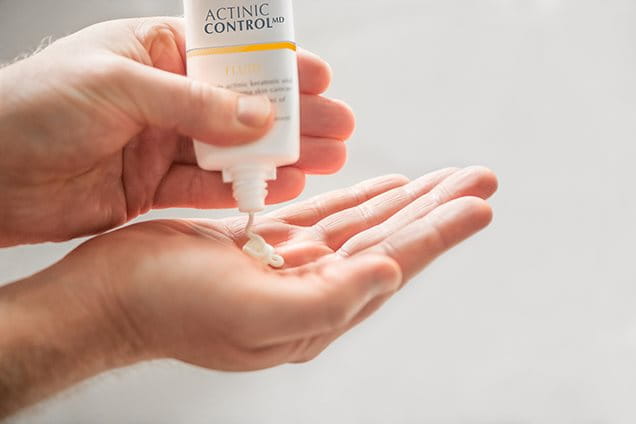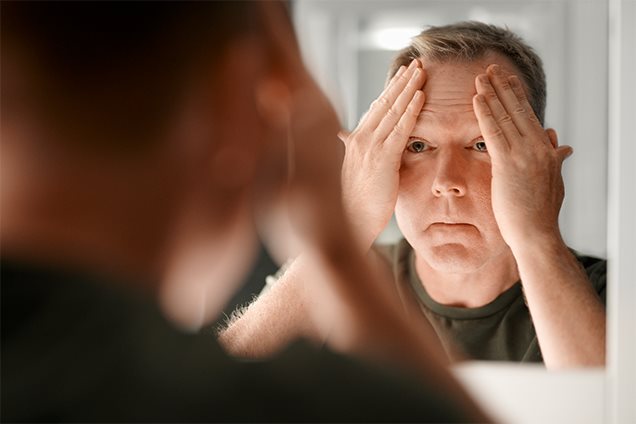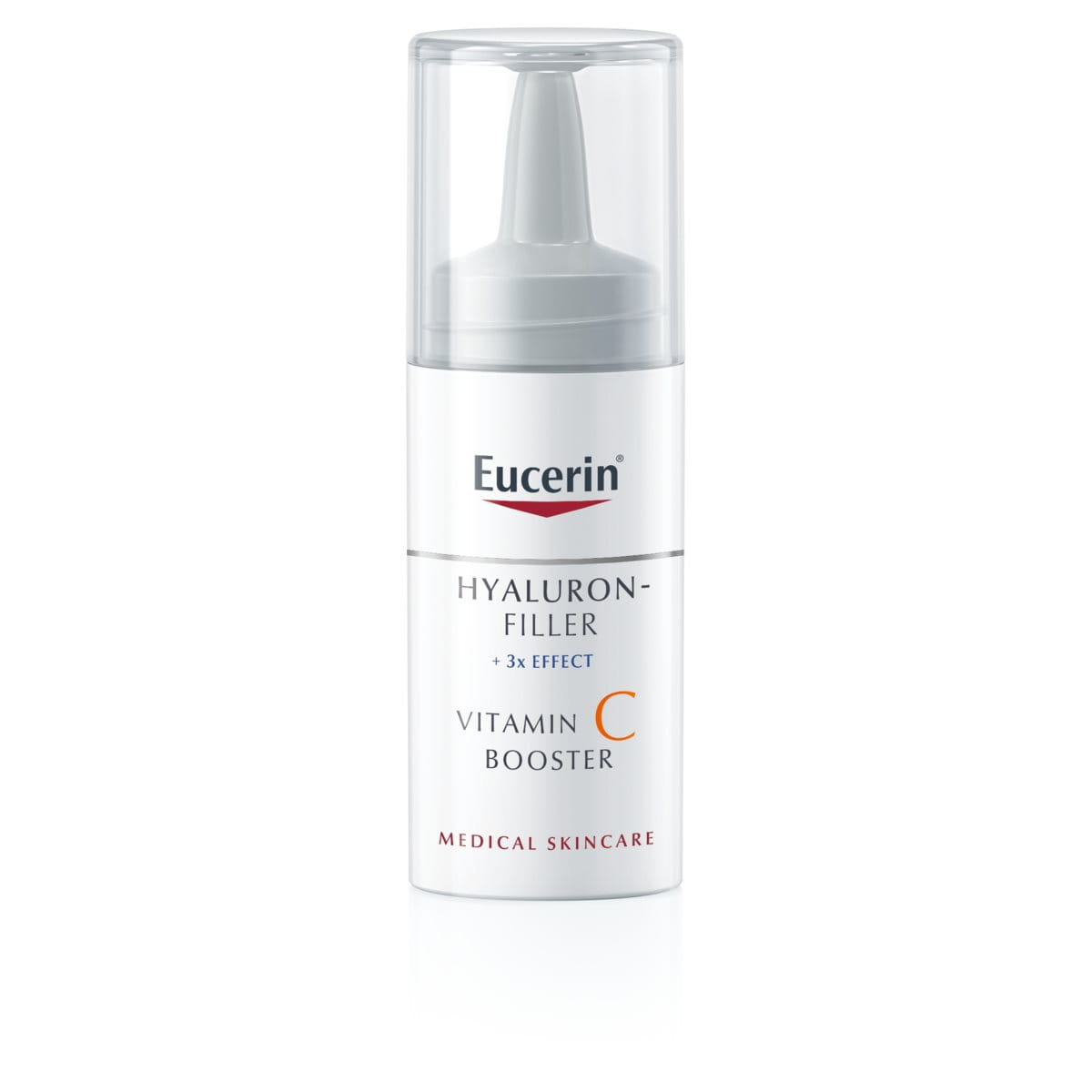Just by applying high SPF sun protection correctly, we can prevent actinic keratosis – a pre-cancerous skin disease with a 15% prevalence in Europe alone.
UV-induced DNA damage is a main cause for actinic keratosis and its progress into non-melanoma skin cancer. The correct sun protection can reduce this damage – so it’s important to know what sun protection product to look for, and how to use it.
Find out why sun protection with a high SPF covering the entire UV spectrum matters. Then take a look at how to avoid under-application, plus useful tips to stay protected when outdoors – and see why Eucerin Actinic Control MD SPF 100 is the perfect choice to do so.
Skin cancer and SPF protection

SPF (sun protection factor) matters – especially if your skin is sensitive to sunlight exposure. SPF stands for sun protection factor and indicates by what factor your time in the sun can be multiplied before your skin develops a redness compared to your time in the sun if you were unprotected. A factor of 100, for example, means that when unprotected skin would start to redden in 5 minutes in the sun, using an SPF 100 would allow to multiply that time by 100. In this case, 5 mins x SPF 100 = 500 minutes.
And this has a direct impact on protection against actinic keratosis. That’s because UV light can damage skin cells called ‘keratinocytes’, which in time, may morph into a pre-cancerous growth called actinic keratosis, and if the sun damage persists even into a cancerous growth called squamous cell carcinoma.
So why use a high SPF?
Simply put, skin accumulates less cell damage when using a high SPF. An SPF of 100, for example, blocks out about 99% of UVB rays – a major cause of cell damage. In addition, the SPF also gives you an orientation of how long you are protected in the sunlight: If you are likely to burn after a certain amount time (e.g. 5 minutes) in the sun, an SPF of 100 will protect you for 100 times that amount of time (100 x 5 minutes). Of course, you should not exhaust that time and ensure that you reapply sun protection every 2 hours during direct sun exposure.
What to look for in your sunscreen

Looking for prevention of non-melanoma skin cancer and actinic keratosis, or adjunctive treatment to the condition? There’s a number of criteria you’ll be looking for. Not just protection levels, but important aspects like a light texture and ease of use. After all, protection only counts if you use it regularly with convenience.
You’ll also find the relevant information in Eucerin Actinic Control MD SPF 100, which was specifically designed for the prevention of actinic keratosis and non-melanoma skin cancer, and as adjunctive treatment of actinic keratosis.
First and foremost, look for a high SPF. It indicates UVB protection, which reduces skin cell damage. We recommend an SPF of 100, as it offers a very high level of protection.
Secondly, see if the sunscreen also offers very high UVA protection. These rays penetrate deeply, and can cause genetic mutations, so broad spectrum protection matters.
And lastly, texture is key. Many sunscreens with a high SPF tend to be thick and greasy, but you’ll want a light, easy-to-apply fluid for a comfortable everyday application. Regular application and re-application are essential for skin cancer prevention.
Tips for better application

Missed a spot when applying sun protection? While a small patch of exposed skin might seem harmless, thorough application is the best way we can minimize sun damage to our skin.
When applying protection, our study found that men leave 13% of the body’s surface uncovered1. We tend to significantly under-apply protection to vital areas – but the good news is that all it takes is a few simple tips to protect ourselves properly and prevent actinic keratosis.
1 Internal Beiersdorf study of 2016 on the use of sun protection amongst a sample of 52 (29 women, 23 men)
What is the right amount of sunscreen I need to apply?
Eucerin Actinic Control MD SPF 100 should be applied at 2mg per cm2 of skin. A finger-length amount can help determine the correct dosage. A finger length equates to roughly two grams of product. Apply as follows:
- Face: ½ finger length ca. 1g
- Neck: ½ finger length ca. 1g
- Scalp: 1 finger length ca. 2g
- Décolleté: ½ finger length ca. 1g
- Per forearm: 1 finger length ca. 2g
- Per back of hand: ½ finger length ca. 1g
How often should I apply?
Sunscreen needs to be applied every day throughout the year. Apply 30 minutes before going outside, and reapply every two hours during exposure. Don’t forget to apply it evenly over your skin, reapplying immediately after swimming, toweling or excessive sweating.
Skin cancer prevention and adjunctive treatment to actinic keratosis requires consistent and adequate sun protection. For that reason, choose a light, fluid application like Eucerin Actinic Control MD SPF 100.
Usage tips
These tips can also prevent our skin from being damaged by the sun – and they’re sometimes easy to forget.
- Avoid direct sunlight in its most intense hours, between 11am to 3pm
- Use clothing, sun hats and glasses to protect your skin
- Apply even on cloudy days as harmful UV rays still reach your skin
- Seek advice on medication, as some increase skin sensitivity to the sun
- Take care around water or sand which can reflect the sun’s UV rays
- Apply after-sun products to soothe and help the skin recover
And importantly, pick a high SPF protection product with UVB and UVA protection – such as Eucerin Actinic Control MD 100 SPF.
Our brand values

We deliver a holistic dermo-cosmetic approach to protect your skin, keep it healthy and radiant.

For over 100 years, we have dedicated ourselves to researching and innovating in the field of skin science. We believe in creating active ingredients and soothing formulas with high tolerability that work to help you live your life better each day.

We work together with leading dermatologist and pharmacist partners around the world to create innovative and effective skincare products they can trust and recommend.






